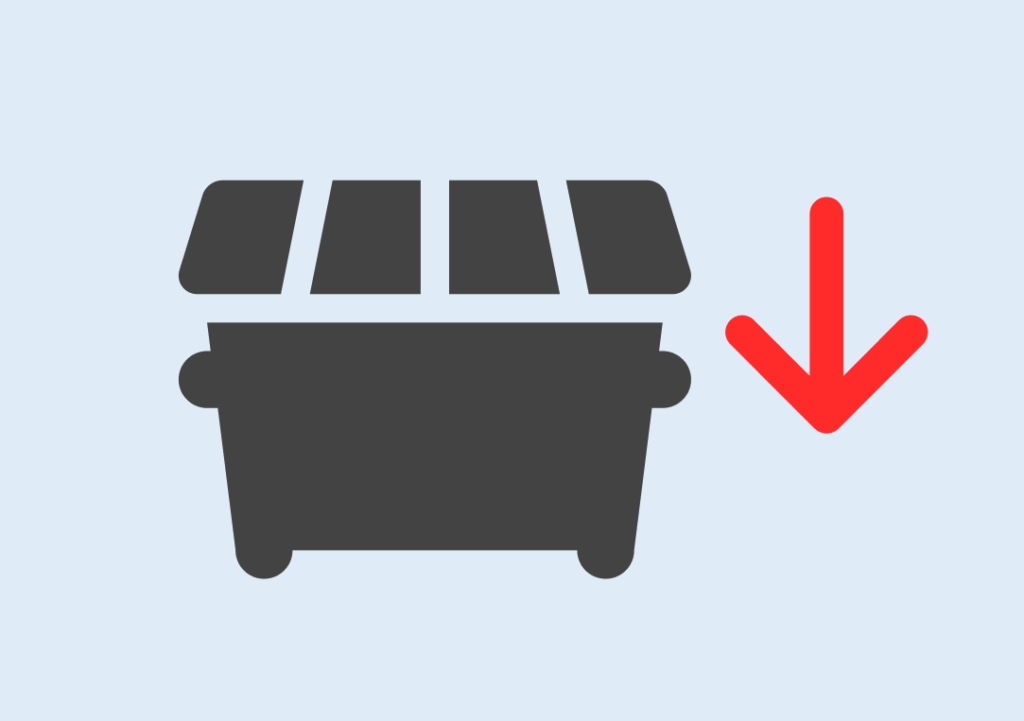Construction is an essential part of modern life, but it has taken its toll on the planet. The industry is accountable approximately 30% of the world’s global waste! Luckily, there are many ways to reduce this footprint. This article will present practical tips and strategies for minimizing waste on the construction site, as well as explain their impacts on a larger scale.

Improving Material Quantity Takeoffs and Ordering Precise Amounts of Materials
One of the most effective ways to reduce waste in construction is to improve material quantity takeoffs to avoid overordering. By accurately estimating the required materials, contractors and project managers can avoid unnecessary additions and reduce waste.
To achieve this, it is important to leverage technology such as BIM software that can assist in material quantity takeoffs. Additionally, project managers should work closely with suppliers to ensure that the correct materials are ordered and delivered in the right quantities. This will help avoid over-ordering, which leads to waste.
- Use digital tools: There are many digital tools available that can help you create accurate material quantity takeoffs. These tools can help you take accurate measurements, estimate material costs. We recommend checking out Sparkel.
- Involve your team: Collaborating with your team can help you identify potential areas for waste reduction and ensure that you order the right amount of materials.
- Review your plans and specifications: Reviewing your plans and specifications can help you identify any potential areas for waste reduction. By identifying these areas early on, you can take steps to reduce waste before construction begins.
Industry Standards and Best Practices for Reducing Waste
Industry standards and best practices can also help to reduce waste in construction. ISO 14001 and ISO 9001 are two examples of internationally recognized standards that can assist with implementing an effective waste management system. These standards can help contractors identify sources of waste, implement waste reduction strategies, and measure the success of their waste management efforts.
To achieve compliance with these standards, contractors and project managers should prioritize training and education for their teams. This will ensure that everyone involved in the project is aware of best practices for reducing waste and is committed to achieving the project’s sustainability goals.
- Reduce packaging waste: Many materials come in excess packaging that can contribute to waste. By working with suppliers to reduce excess packaging, you can minimize waste and improve sustainability.
- Reuse materials: Reusing materials is a great way to reduce waste and save money. Salvageable materials can be used in other projects, reducing the need for new materials.
- Implement recycling programs: Recycling programs can help reduce waste and promote sustainability. By implementing recycling programs on your job site, you can divert materials from landfills and reduce your environmental impact.
Strategies for Addressing Challenges in Collaboration and Changes in Drawings
Collaboration and changes in drawings can also present challenges for reducing waste in construction. Changes in the design or scope of the project can result in wasted materials or unnecessary additions. To address this challenge, contractors should prioritize effective communication and collaboration among all parties involved in the project.
It is essential to ensure that all stakeholders, including architects, engineers, contractors, and project managers, are aware of any changes. Using 3D models and the right software to handle them, will help visualize changes and assess their impact on material requirements. Thereby, allowing for adjustments to be made before any unnecessary waste occurs.
- Keep detailed records: Keeping detailed records of changes can help you identify potential areas for waste reduction. By tracking changes and adjustments, you can ensure that the right materials are ordered. Sparkel is a great software for this.
- Use 3D models: 3D models help you visualize changes and identify potential areas for waste reduction. By using 3D models, you can ensure that materials are ordered accurately and reduce waste from excess materials.
- Communicate regularly: Regular communication with your team and suppliers are essential for waste reduction. By communicating regularly, you ensure that everyone is on the same page and that materials are ordered accurately.
The Environmental Impact of Waste in Construction
The environmental impact of waste in construction is significant, and reducing waste can help to achieve sustainability goals beyond regulations like the Green Deal and Environmental Impact Statement. Reducing waste in construction will conserve natural resources, reduce greenhouse gas emissions, and reduce the environmental impact of construction activities.
By implementing effective waste management strategies, contractors can demonstrate their commitment to sustainability and reduce the environmental impact of their projects. Not only does this help to achieve regulatory compliance but it also enhances the reputation of the company. Which in turn create a positive impact on the local community.
Conclusion
Contractors and project managers can contribute to reducing waste by:
- Be proactive in your approach.
- Improving material quantity takeoffs.
- Following industry standards and best practices.
- Addressing collaboration challenges.
- Being aware of the environmental impact of waste.
In return, this will create a positive impact on the environment and the local community.

